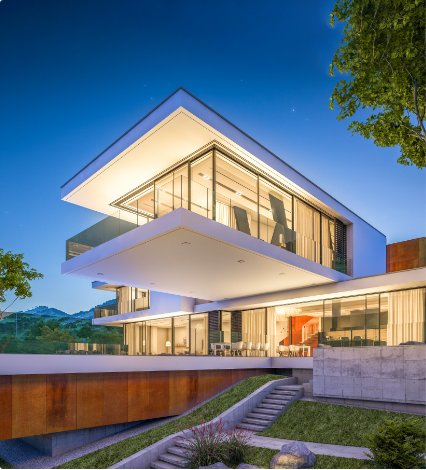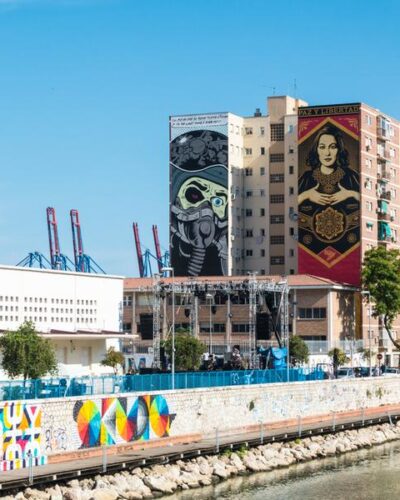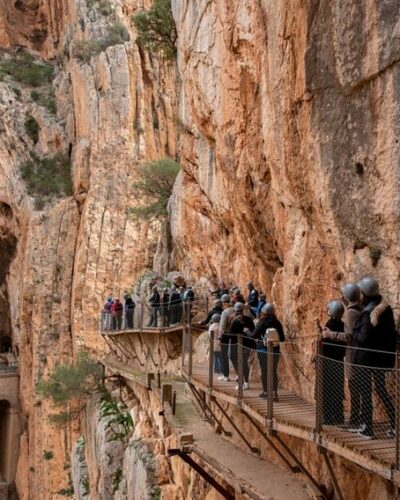Barcelona is one of the most popular tourist destinations in the Mediterranean thanks to its rich history, unique architecture, renowned art scene, delicious food, and vibrant nightlife.
It’s easy to find tourist accommodation throughout Barcelona, but it’s helpful to learn about the city’s most popular districts when choosing where to stay and explore.
The Gothic Quarter is one of Barcelona’s most famous areas. It’s the historic center of the old city of Barcelona, and its narrow streets are packed with beautiful medieval buildings, charming boutiques, fascinating museums, and busy restaurants, cafes, and bars.
This travel guide explains what makes Barri Gòtic so unique and highlights its top attractions to help you plan your visit.
What is the Gothic Quarter?
The Gothic Quarter is one of Barcelona’s oldest neighborhoods, dating back over 2,000 years. It was here that the ancient Roman colony of Barcino was first established by Emperor Augustus between 15 and 10 BC.
The remains of ancient Roman walls that marked the perimeter of Barcino can still be seen today. Over hundreds of years, the colony grew into an imperial city that continued to expand and develop throughout the Middle Ages following the fall of Rome.
Modern Day
Today, the Gothic Quarter is a blend of old and new as historic buildings sit beside more modern developments. The labyrinth of winding streets and alleyways gives the district a quaint atmosphere. There’s plenty of medieval architecture to admire among the cobblestoned streets and many popular tourist attractions.
Culture
Nightlife in the Gothic Quarter is vivacious, with locals and visitors alike frequenting the many restaurants, bars, and cafes. It’s easy to find good food and drink here, and many venues host live music.
La Rambla, a large, tree-lined pedestrianized street, cuts right alongside the Gothic Quarter and is home to many eateries and bars. Exploring the streets that extend from La Rambla is a fantastic way to stumble across peaceful plaças (squares), quaint boutiques, and charming coffee shops.
Pros and Cons of Staying in the Gothic Quarter
Pros:
- Walking Friendly: The district is pedestrianized, making it quiet, safe, and easy to explore on foot.
- Scenic: There are many beautiful historic buildings and picturesque squares to stroll among.
- Attractions: You can visit many popular attractions in a very compact area.
- Family Friendly: Hotels, eateries, and attractions are family-friendly, which is ideal if you’re traveling with kids.
Cons:
- Expensive: The central location of the Gothic Quarter makes it one of Barcelona’s most expensive districts to stay in.
- Crowded: The narrow streets become bustling and crowded, and pickpockets aren’t uncommon.
- Caters Towards Nightlife: While the nightlife is lively, it centers around dining and music rather than drinking and dancing.
Dining and Drinking in the Gothic Quarter
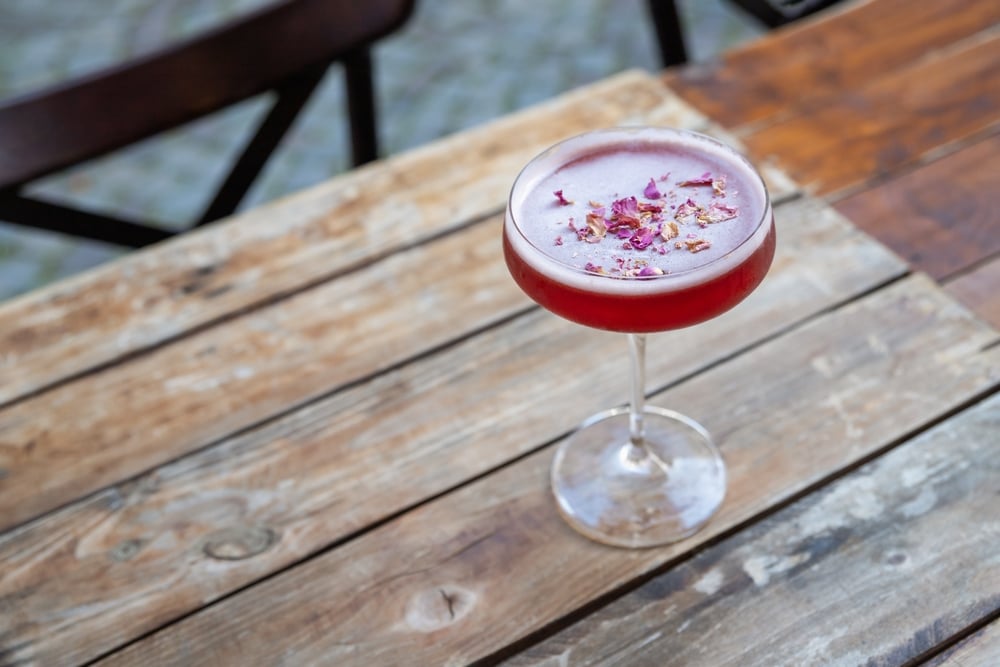
You’ll find plenty of restaurants on La Rambla to grab a bite to eat, but for an authentic taste of Spain, it’s better to head off the beaten path and explore the narrow streets away from the main drag.
Look for small, family-run restaurants and tapas bars to find traditional Catalan fare made from local, seasonal produce. Consider a guided tour of the local bars and restaurants for a tasty and informative introduction to the food of Catalunya.
Vermouth is a popular drink in Barcelona and has been so since the Spanish Civil War. When visiting a taverna, ask for the vermut casero — the house Vermouth — which has more depth and complexity than Italian Vermouth. It’s traditional to drink Vermouth during the daytime with seafood tapas, olives, potato chips, and other light bites.
Top Attractions in the Gothic Quarter
Sightseeing in the Gothic Quarter is easy since so many attractions are tightly packed together.
Walking tours are a great way to catch the main sights if you’re short on time, but if you have several days in the Gothic Quarter, you’ll find that you can easily spend hours in the many museums and churches. Here are 15 of the most popular sights and attractions to add to your itinerary.
Catedral de Barcelona
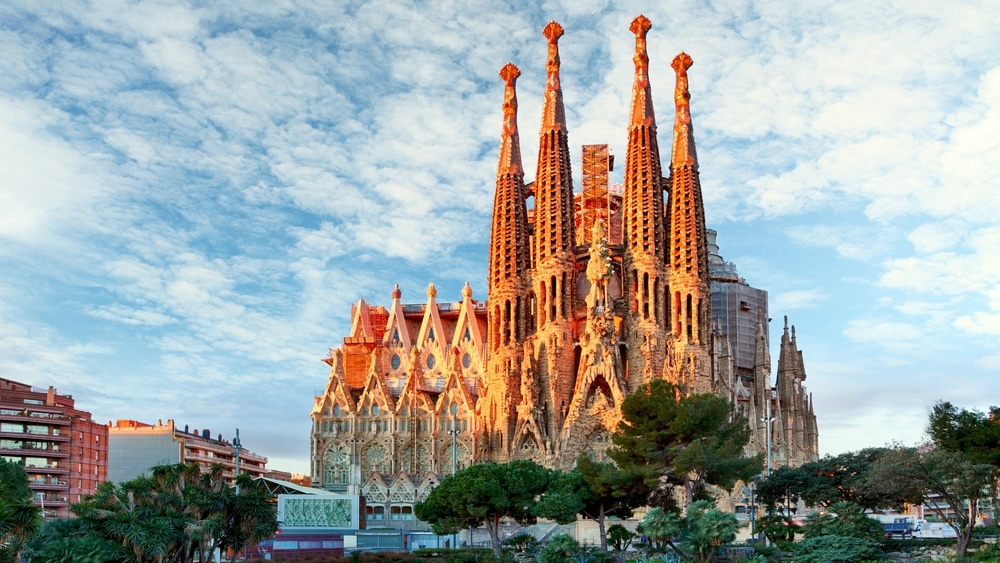
- Address: Pla de la Seu, s/n, 08002
- Website: catedralbcn.org
- Opening hours: Monday to Friday, 9.30 am – 6.30 pm, Saturday 9.30 am – 5.15 pm, Sunday, 2 pm – 5 pm.
The Gothic Barcelona Cathedral is one of the city’s most famous monuments. Built between the 13th and 15th centuries, the cathedral has a dramatic facade adorned with many spires and buttresses.
Inside, you can explore ancient tombs of religious figures, see several artworks by Spanish masters, and check out the Museum of the Cathedral to learn more about the building’s history.
Plaça del Rei

- Address: Pl. del Rei, s/n, 08002
- Website: barcelonaturisme.com/placa-del-rei
- Opening hours: 24/7
Plaça del Rei is one of the most famed and beautiful squares in the old town district of Barcelona. It’s home to the impressive Palau Reial Major (Royal Palace), which exemplifies medieval architecture. Be sure to make time for a stroll here for a glimpse into Spain’s grand past.
Cappella di Santa Agata
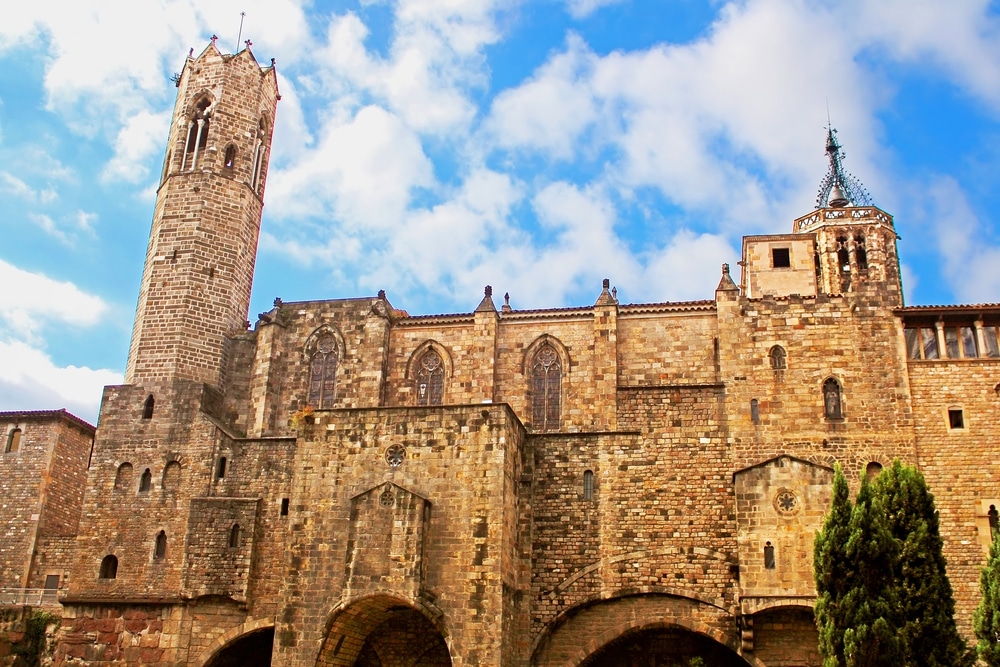
- Address: Pl. del Rei, s/n, 08002
- Website: catalunya.com/royal-chapel-of-santa-agata
- Opening hours: Tuesday through Saturday 10.00 am – 7.00 pm, Sunday 10.00 am – 8.00 pm.
This chapel was built on the site of part of the old Roman wall in the 14th Century, and it is an incredibly beautiful building that’s certainly worth a visit. The altarpiece, known as the Altare del Connestabile, was painted by Jaume Huguet and is considered one of the finest Catalan artworks today.
Museu Picasso
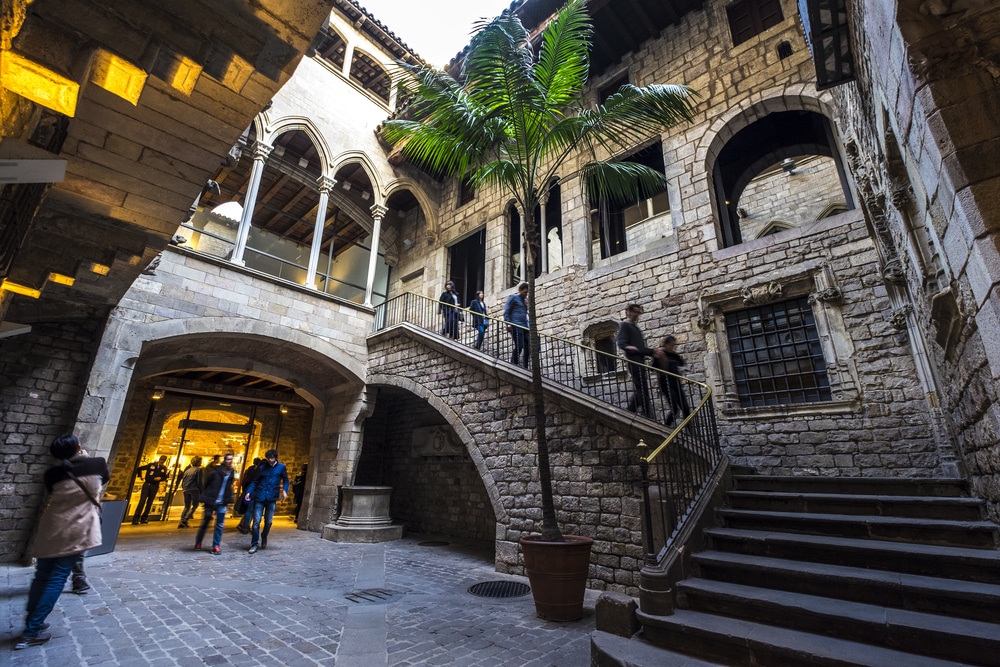
- Address: C/ de Montcada, 15-23, 08003
- Website: museupicasso.bcn.cat
- Opening hours: Tuesday through Sunday, 10.00 am – 7.00 pm.
The Picasso Museum is housed in a series of medieval Gothic palaces and contains a huge collection of the artist’s drawings, paintings, lithographs, and etchings. It contains an important collection of Picasso’s earliest works and several of his famed Cubist paintings.
Iglesia de Santa Maria del Mar
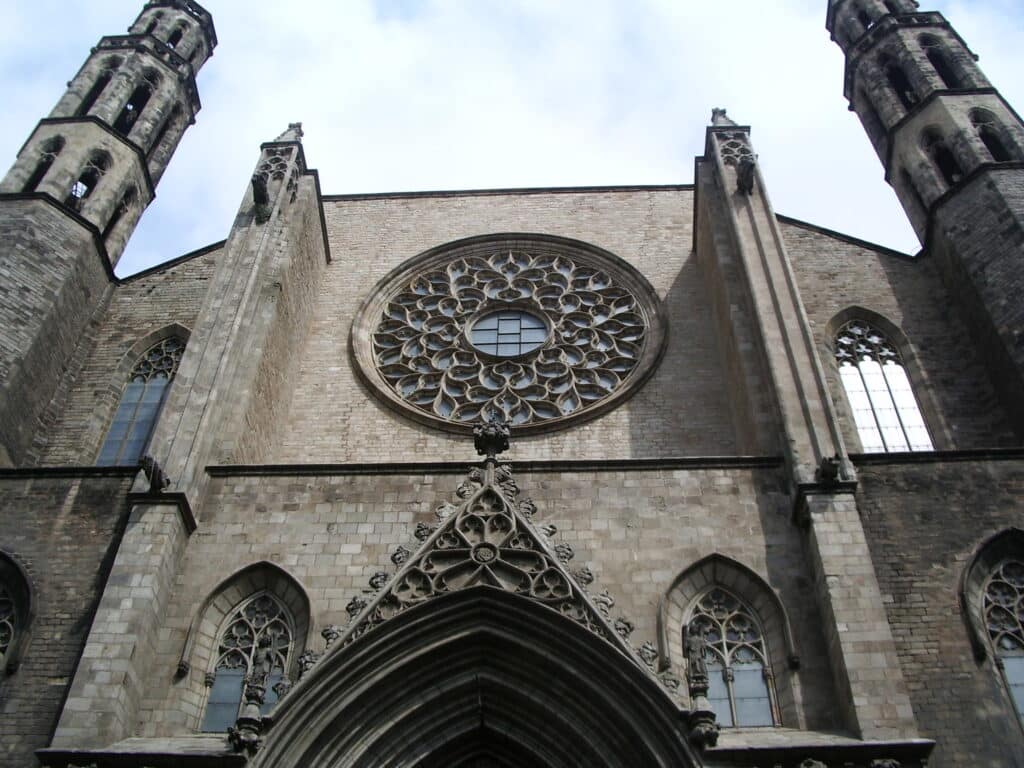
- Address: Plaça de Santa Maria, 1, 08003
- Website: barcelonaturisme.com/santa-maria-del-mar
- Opening hours: 10.00 am – 8.30 pm, daily.
This ornate Gothic church once served as a place of worship for shipbuilders and merchants in the Middle Ages. An intricate stained-glass rose window, touring columns, and a high-vaulted nave create an impressive, spacious, and serene space to enjoy a peaceful moment in.
Basílica de Santa Maria del Pí
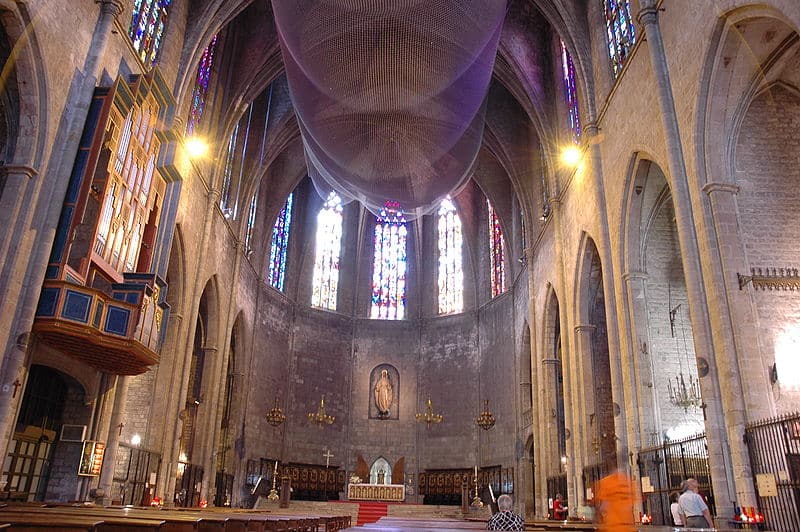
- Address: Plaça del Pi, 7, 08002
- Website: basilicadelpi.cat
- Opening hours: Monday through Saturday 10.00 am – 6.00 pm.
The Church of the Blessed Lady of the Pine Tree is far more austere than many other churches in Barcelona. This allows its decorative pieces — a pointed arch doorway, a statue of the Madonna, and stained-glass windows — to stand out. Inside of Basilica de Santa Maria del Pi is a treasury of sacred art and gold and silver jewelry for visitors to discover.
Museu Frederic Marès

- Address: Plaça Sant Iu, 5, 08002
- Website: barcelona.cat/museufredericmares
- Opening hours: Tuesday through Sunday, 10 am – 7 pm.
Sculptor Frederic Marès Deulovol donated his private collection of artworks to the city of Barcelona, and it’s on display here. This impressive collection at Museu Frederic Marès includes ancient Roman sculptures, Gothic and Romanesque religious art, and decorative Baroque objects.
Museu de la Xocolata

- Address: C/ del Comerç, 36, 08003
- Website: museuxocolata.cat
- Opening hours: Tuesday through Saturday 10.00 am – 7.00 pm, Sunday 10.00 am – 3.00 pm.
Barcelona’s Confectioners’ Guild founded the Museum of Chocolate to highlight the history and art of chocolate. Many artworks are on display constructed from chocolate, including architectural models of Barcelona’s most famous buildings. Enjoy a hot chocolate and pastry from the museum cafe before you leave.
Palau Episcopal
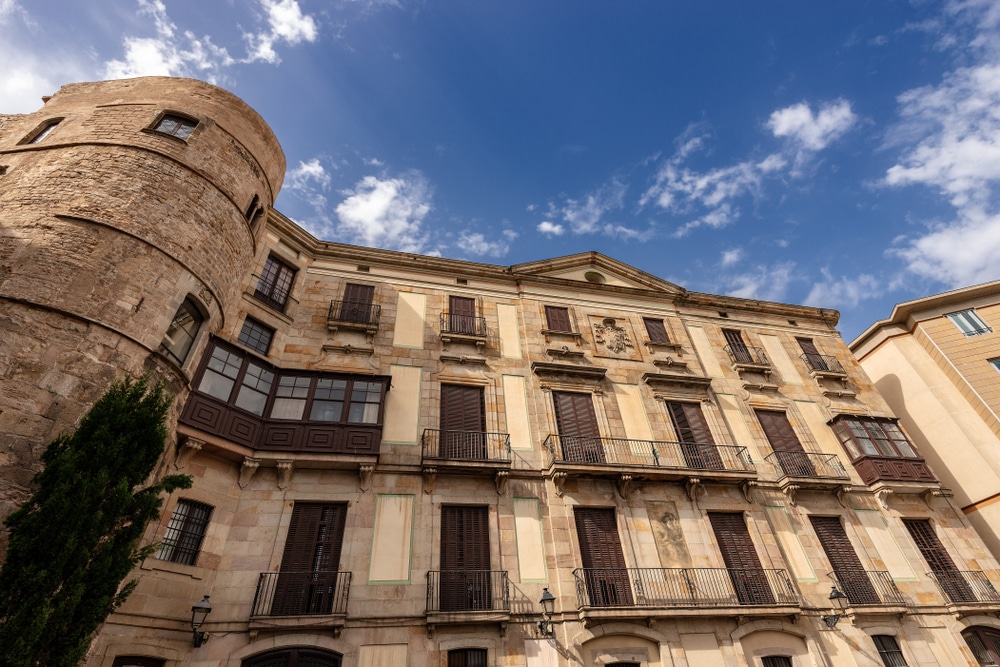
- Address: C. del Bisbe, 5, 08002
- Website: esglesia.barcelona
- Opening hours: Monday through Friday, 9.00 am – 2.00 pm
The Episcopal Palace was first established in the 10th century, but the current building was constructed in the 12th and 13th centuries. It was further enhanced in the 15th century and renovated in the 19th century, and it’s a fantastic example of the evolution of architectural styles throughout history.
Palau de la Generalitat
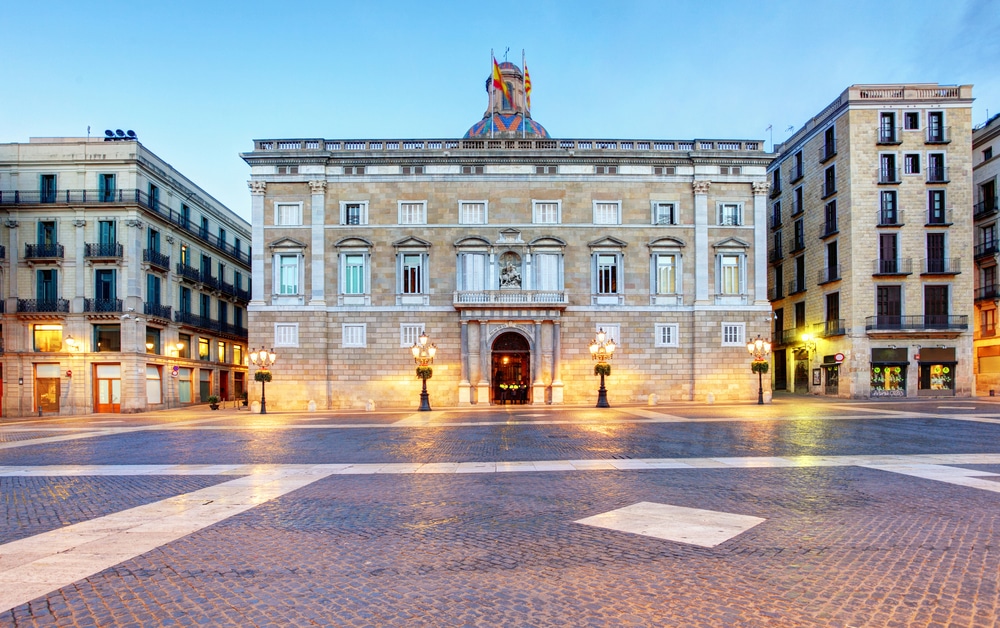
- Address: Pl. de Sant Jaume, 08002
- Website: barcelonaturisme.com/palau-de-la-generalitat
- Opening hours: Monday through Saturday, 10 am – 8 pm.
On the northwest of the Plaça de Sant Jaume is Palau de la Generalitat, a relatively modern building compared to many others in the Gothic Quarter. It was built in the 15th and 17th centuries to seat representatives of Spanish provinces. Today, it houses Catalonia’s regional government.
The Temple of Augustus
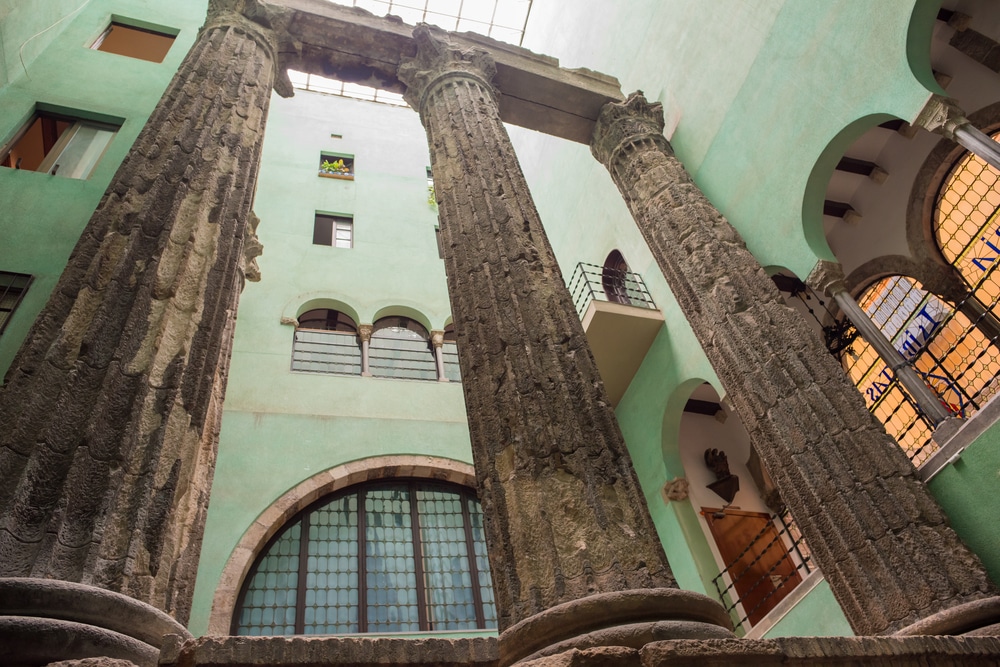
- Address: Carrer del Paradís, 10, 08002
- Website: barcelona.cat
- Opening hours: Monday 10.00 am – 2.00 pm, Tuesday through Saturday 10.00 am – 7.00 pm, Sunday 10.00 am – 8.00 pm.
This Roman temple is hidden on a narrow street behind the Catedral de Barcelona. The Temple d’August is a brilliant way to glimpse ancient architecture and learn about the original Roman colony that founded Barcelona.
Sinagoga Major de Barcelona
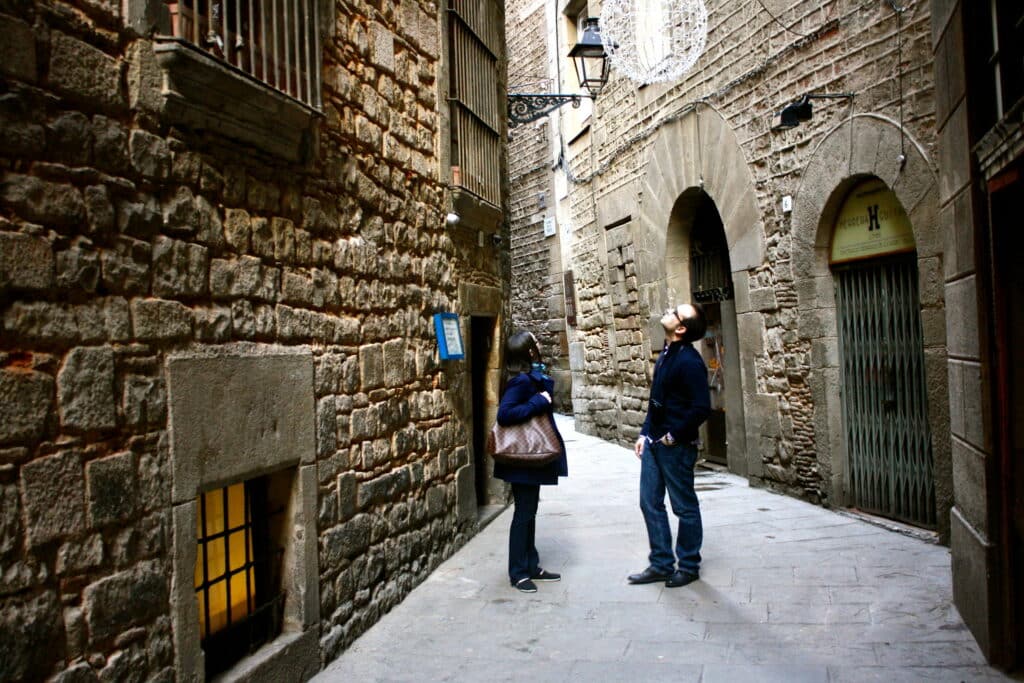
- Address: Carrer de Marlet, 5, 08002
- Website: sinagogamayor.com
- Opening hours: Monday through Friday, 10.30 am – 6.30 pm; Sunday 10.30 am – 3.00 pm.
Barcelona’s Jewish Quarter is known as El Call, and it’s one of the prettiest areas in the Gothic Quarter. It’s home to an ancient synagogue — Sinagoga Major de Barcelona — that dates back to the 4th century. Visiting here allows you to learn of the Jewish community’s persecution throughout the Middle Ages.
Plaça Reial
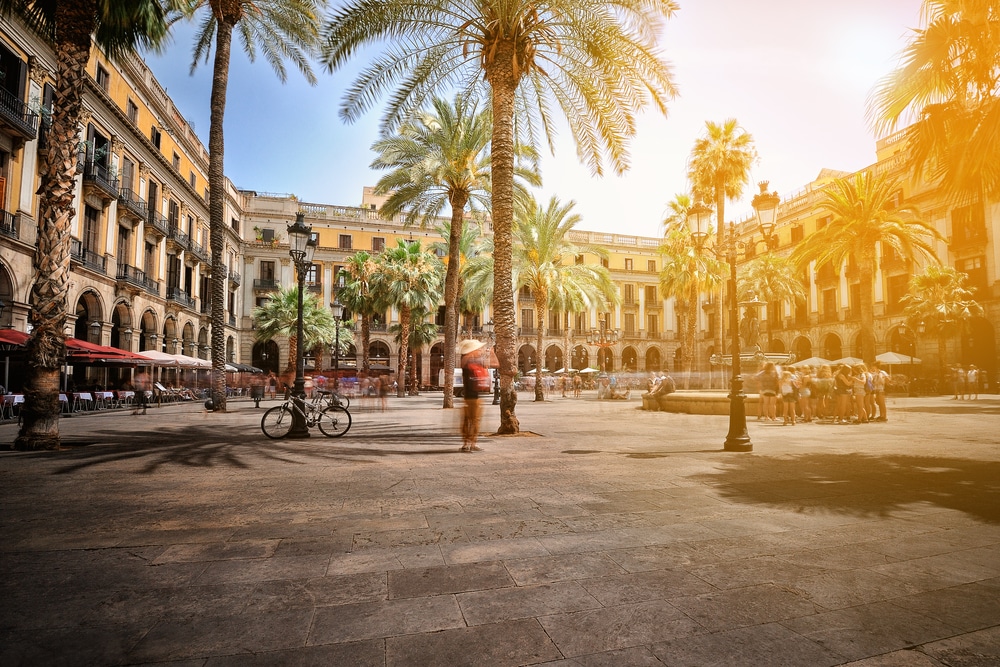
- Address: Pl. Reial, 08002
- Website: barcelonaturisme.com/placa-reial
- Opening hours: 24/7
Although La Sagrada Familia and Casa Mila are two of Gaudi’s best-known buildings in Barcelona, Plaça Reial is also worth visiting to see some of the famed architect’s earliest works. The street lamps in this grand square were one of his first projects following his graduation, giving visitors a fascinating glimpse into the earlier stages of his illustrious career.
La Boqueria
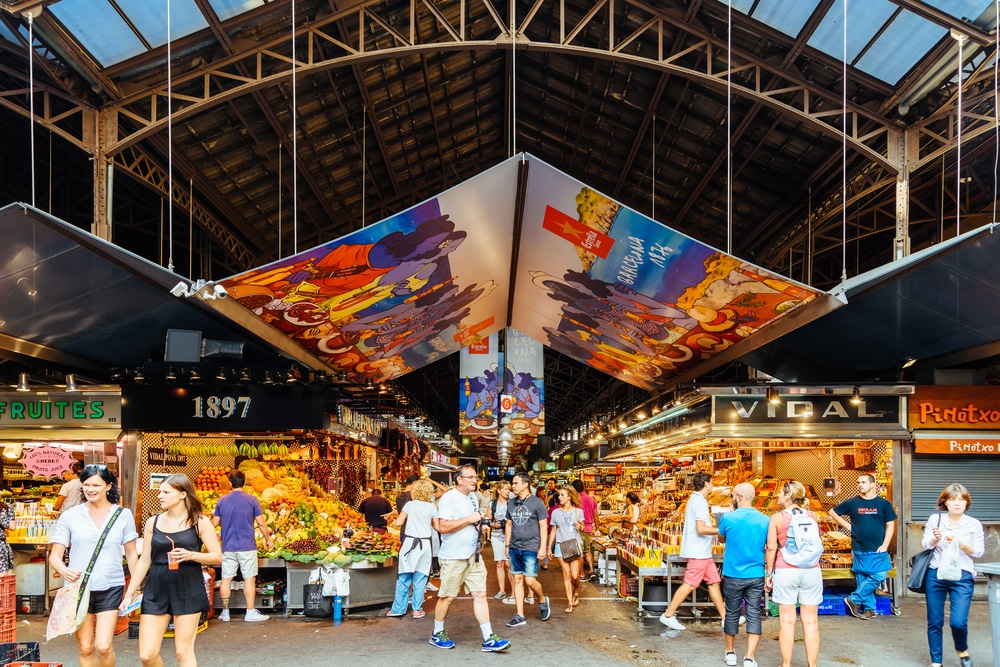
- Address: Rambla, 91 08001
- Website: boqueria.barcelona
- Opening hours: Monday through Saturday, 8.00 am – 8.30 pm.
The La Boqueria Market is right on the border of the Gothic Quarter, and many consider it the beating heart of Barcelona.
It’s one of Europe’s oldest markets, dating back to 1217 when it began as a meat market before gradually expanding to include a huge variety of vendors. It’s worth a visit simply to soak up the atmosphere, but it’s also a great opportunity to pick up fresh produce, discover handicrafts made by local artisans, and grab a drink and bite to eat.
Gran Teatre del Liceu
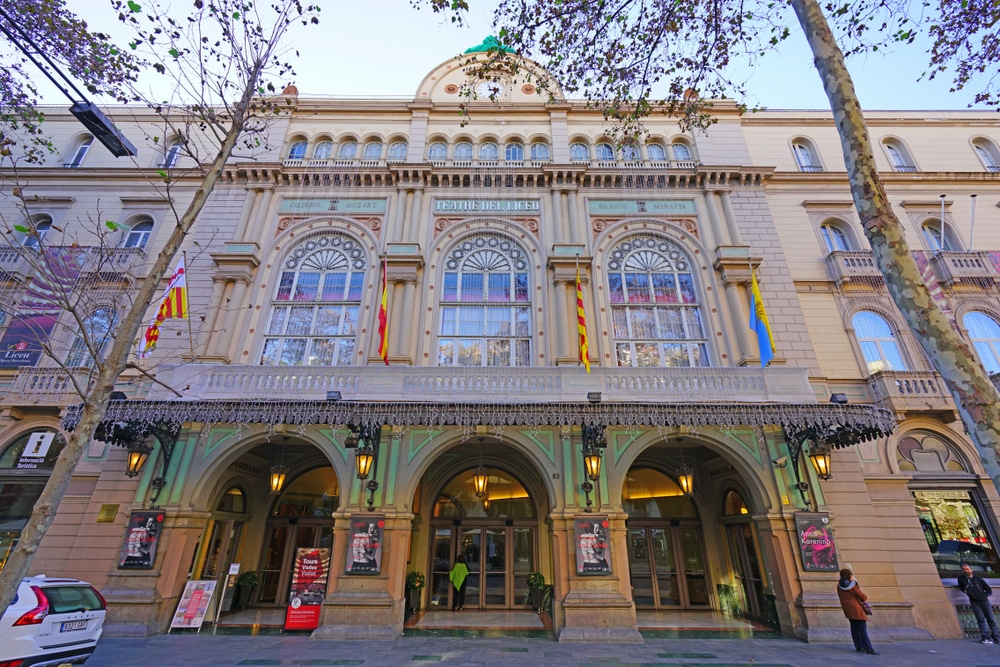
- Address: La Rambla, 51-59, 08002
- Website: liceubarcelona.cat
- Opening hours: See website.
The Gran Teatre del Liceu, situated on La Rambla, is one of Europe’s most important opera houses. The former convent building was transformed into an opera house in 1847. World-famous opera singers, including Pavarotti, Domingo, and Tebaldi, have performed here. Check the schedule ahead of time to buy tickets.
Alternative Neighborhoods in Barcelona
The Gothic Quarter is just one small district of Barcelona, and it’s important to travel far and wide to get a true understanding of this vibrant city. Here are some other popular districts to consider staying in or exploring during your visit.
Ciutat Vella
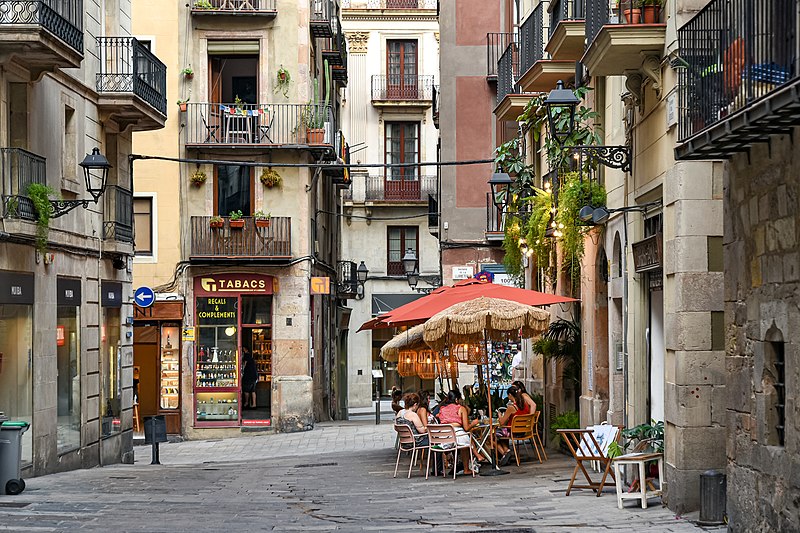
Ciutat Vella, which means ‘Old City,’ sits right beside the Gothic Quarter on the other side of La Rambla. It’s an incredibly popular region for tourists to stay in thanks to its high proportion of hotels and attractions that are densely packed together.
La Barceloneta

La Barceloneta was once a fishing neighborhood but is now home to some of Barcelona’s best seafood restaurants and beaches. In addition, there are lots of beachside bars and cafes to enjoy during the day and several clubs to party in at night.
La Ribera
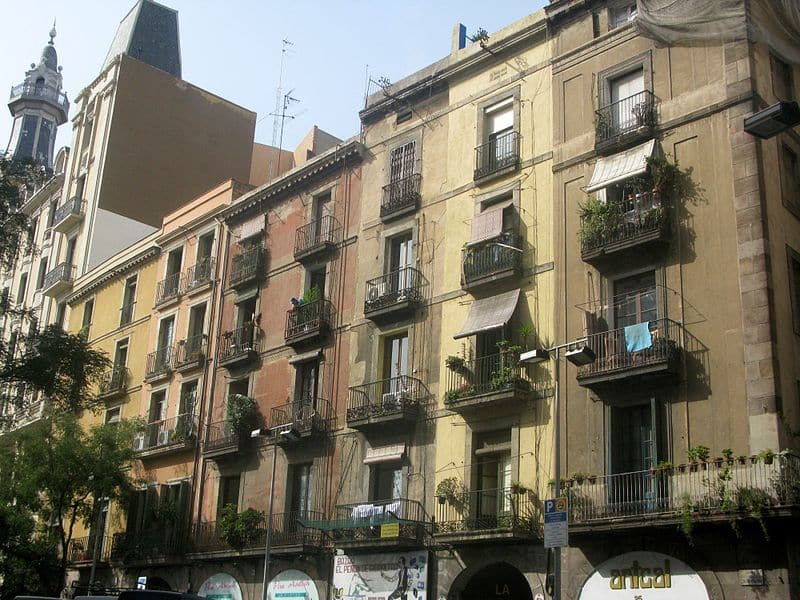
La Ribera was Barcelona’s wealthiest neighborhood during the Middle Ages, and today this area is home to many fashionable shops, restaurants, bars, and art galleries. The district’s main thoroughfare is Passeig Del Born, leading to a stylish seafront known by locals as El Born.
Eixample

Eixample translates as ‘Extension,’ a reference to this district being an extension of Barcelona’s Old Town. This stylish area is packed with hotels, restaurants, and bars. There is lots of Art Nouveau architecture to enjoy, and it’s here where you can witness Gaudi’s most famous masterpiece, La Sagrada Familia.
Stay in Barcelona’s Gothic Quarter
Now you know more about the Gothic Quarter of Barcelona; you can decide if this fascinating region of the city is the right place to stay and get started planning your itinerary. Wherever you stay and whatever you do, you’re sure to enjoy your time in this fascinating, fun-packed city!
Featured Image Cred: Xavi Martin
